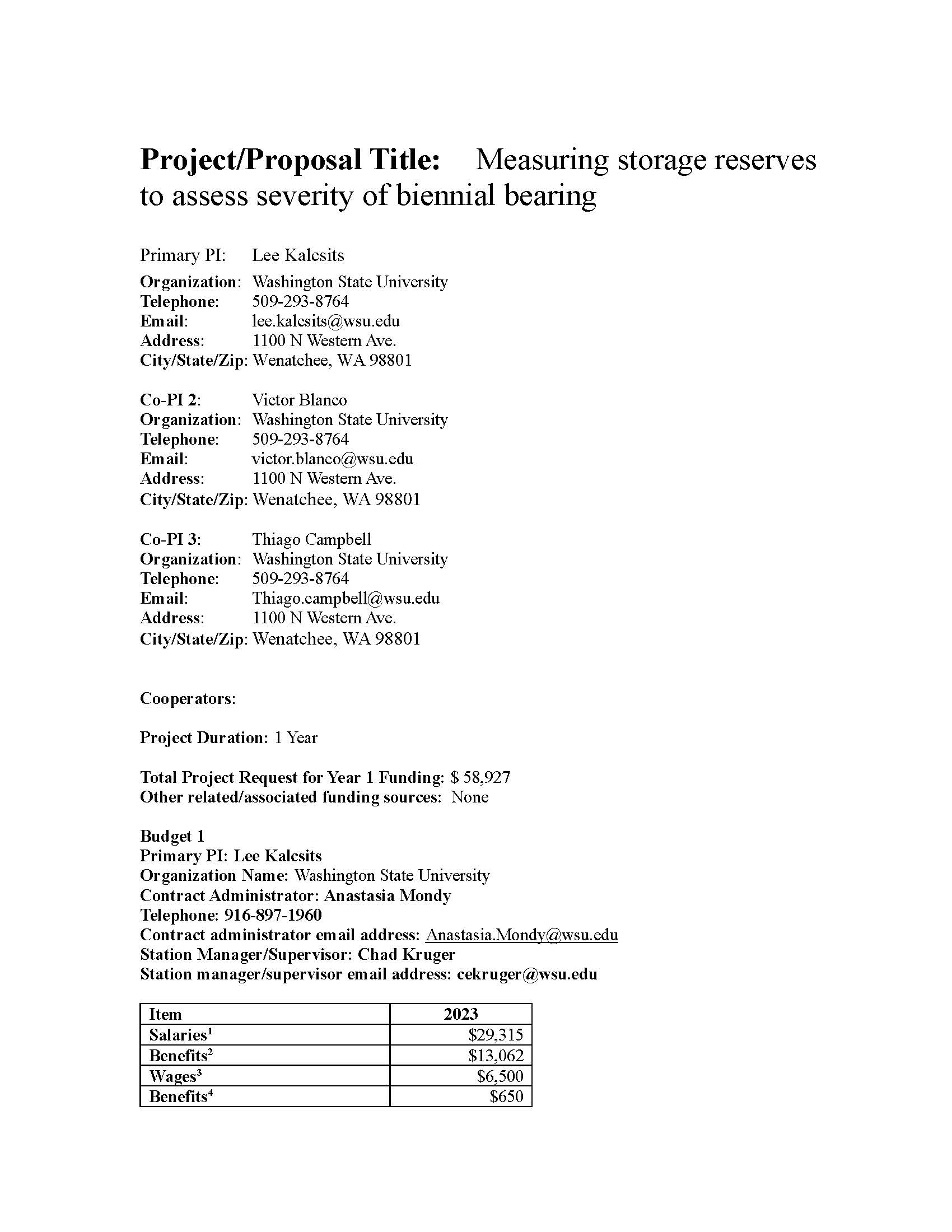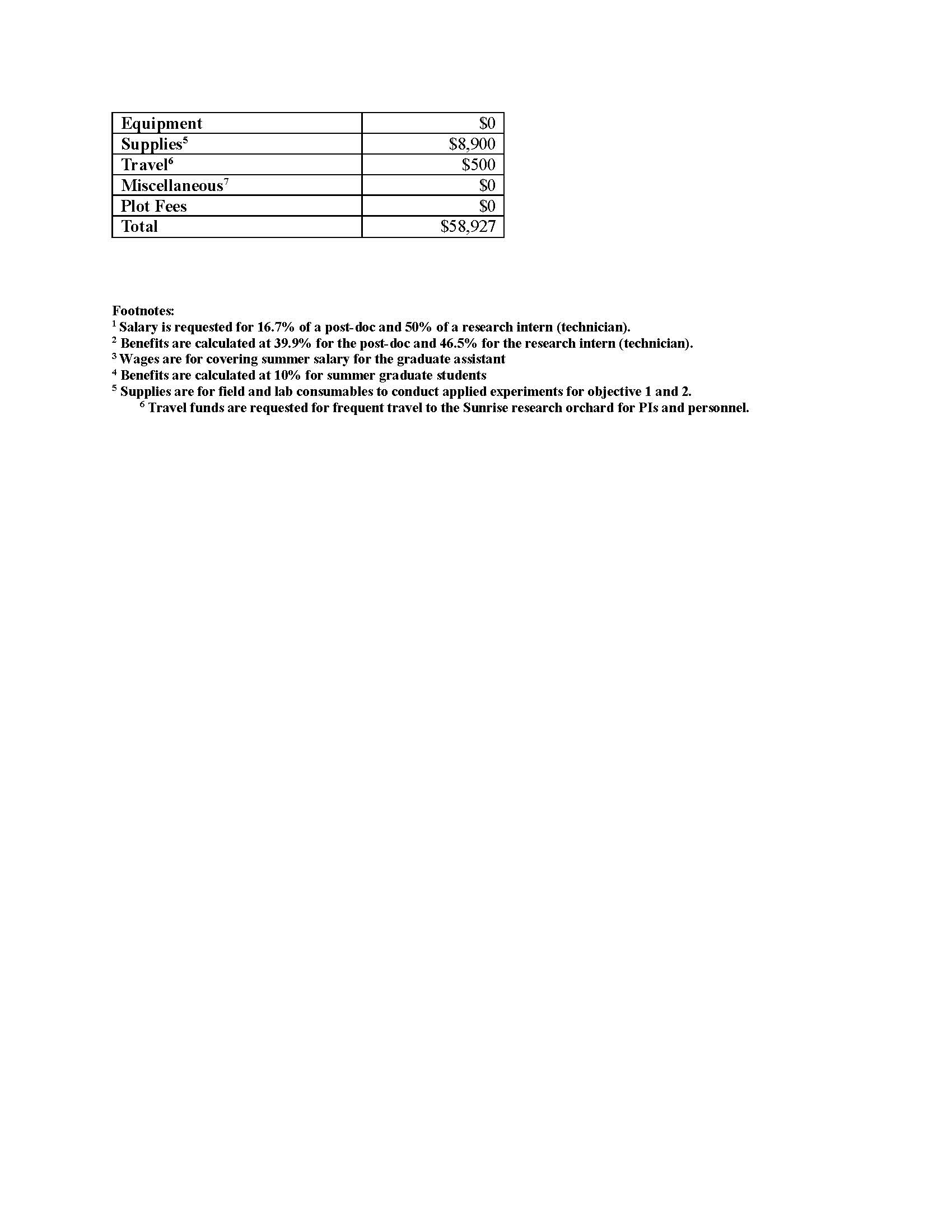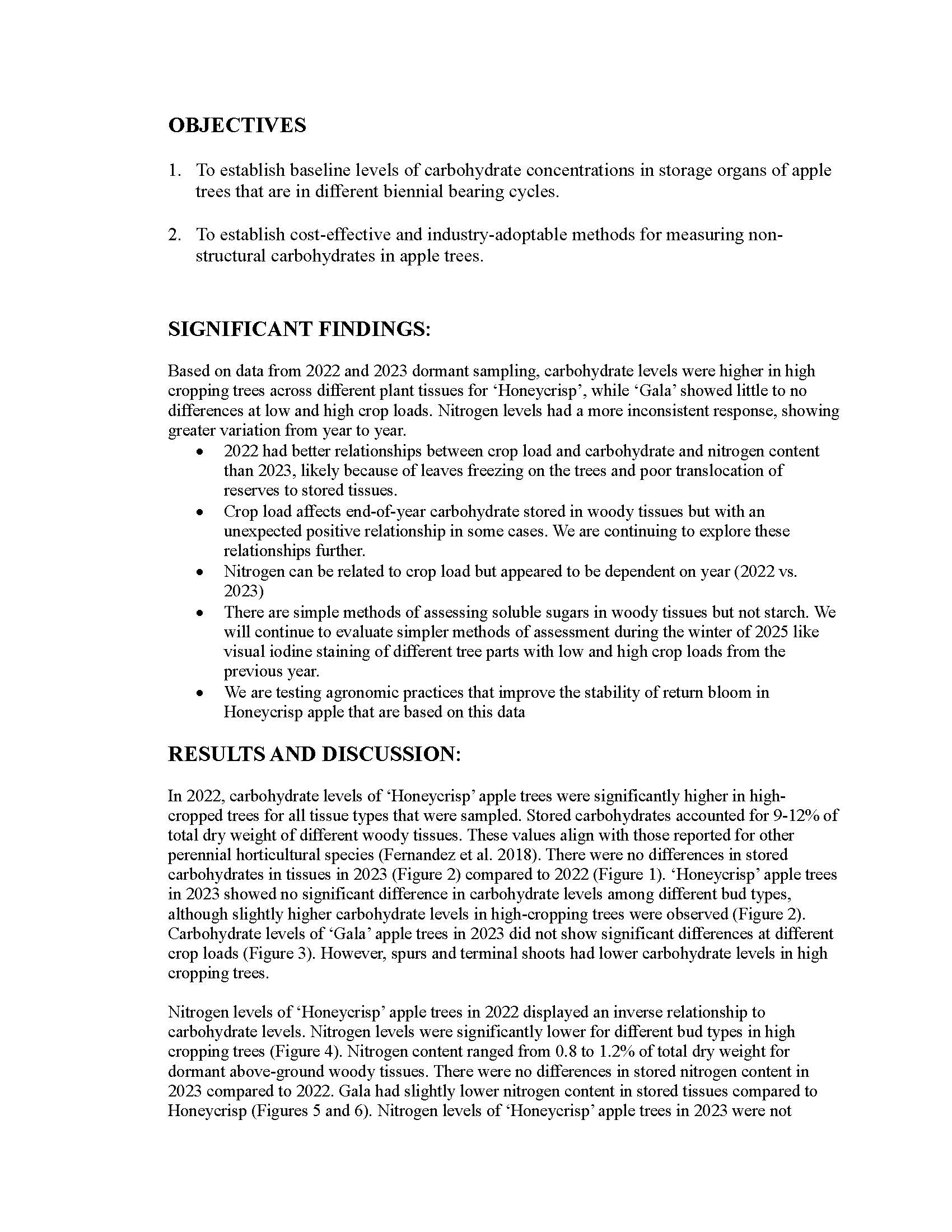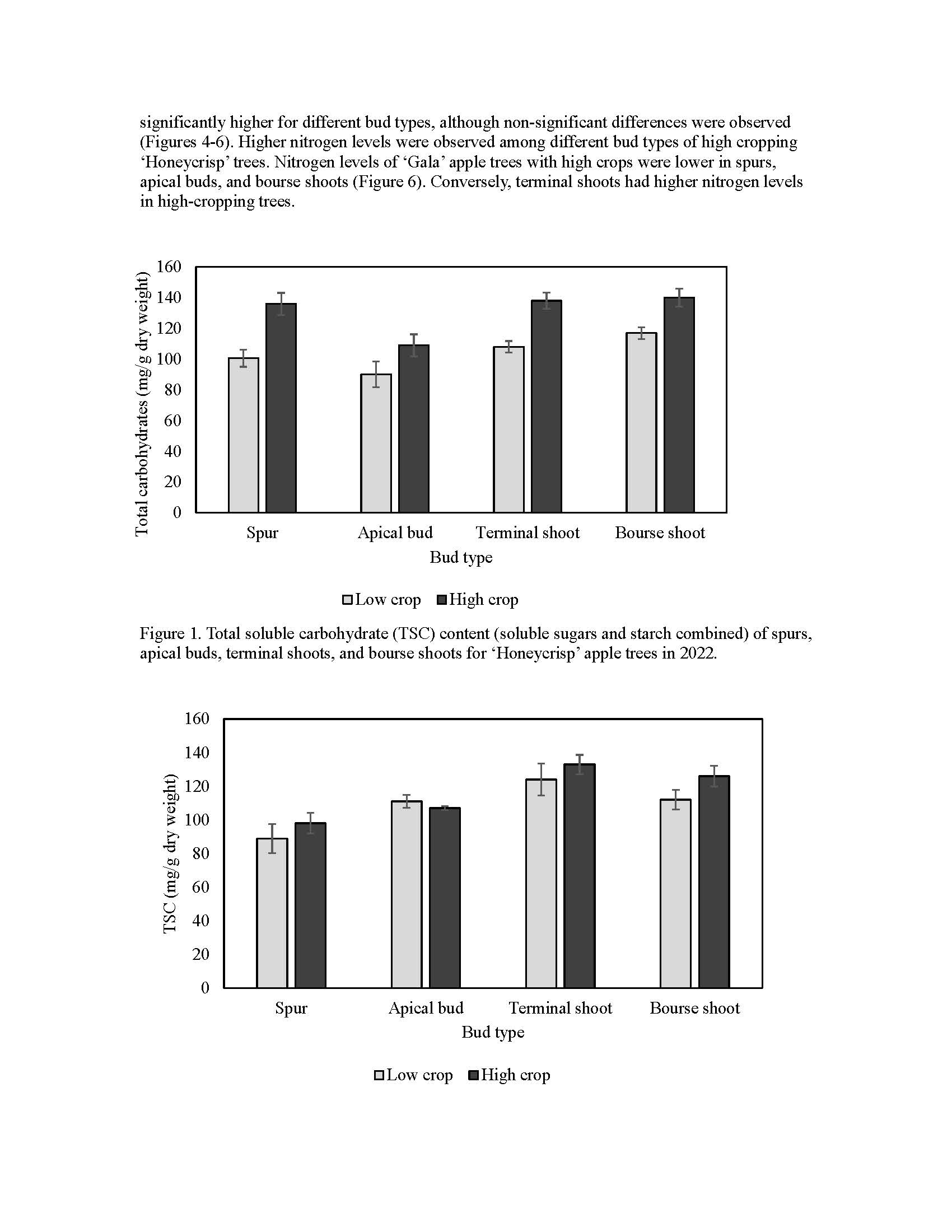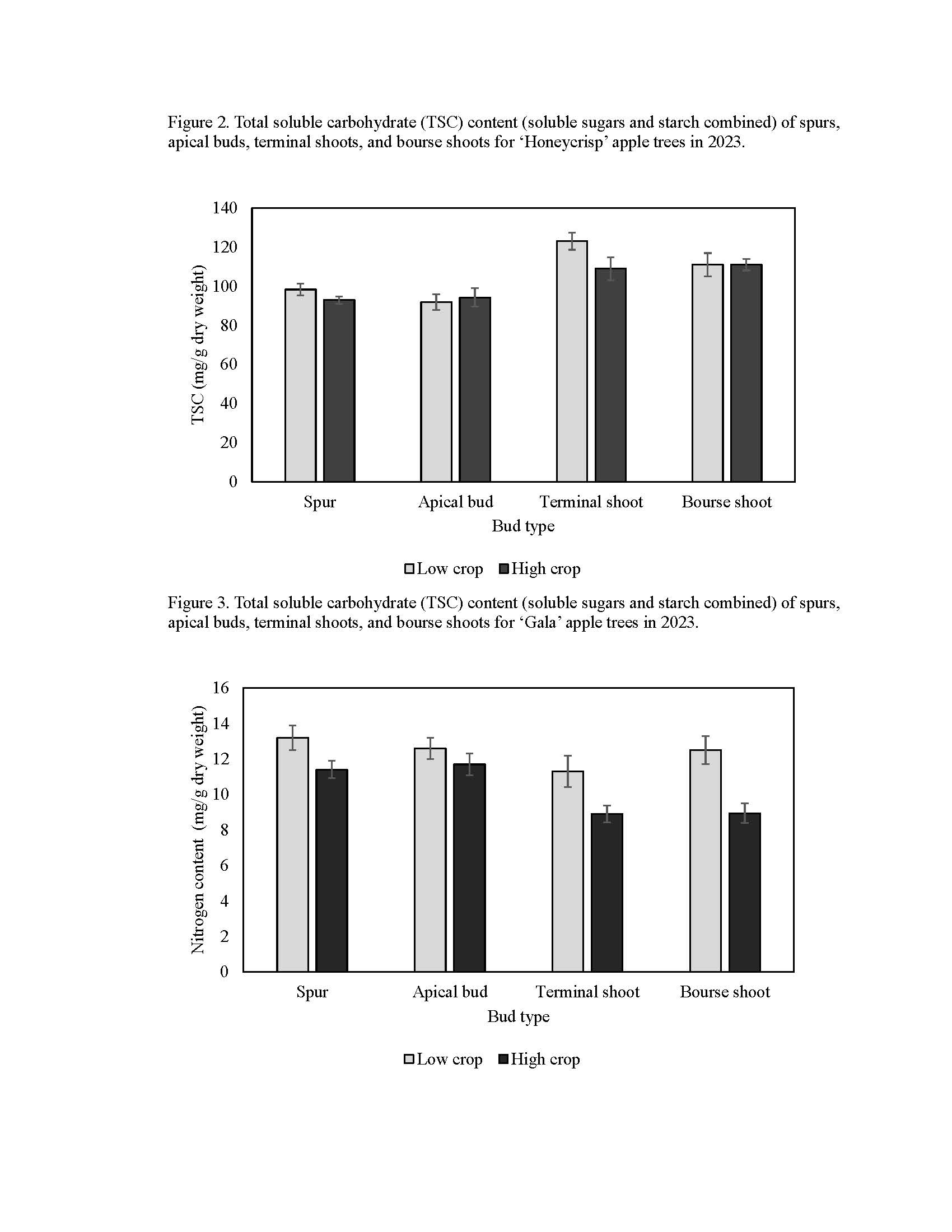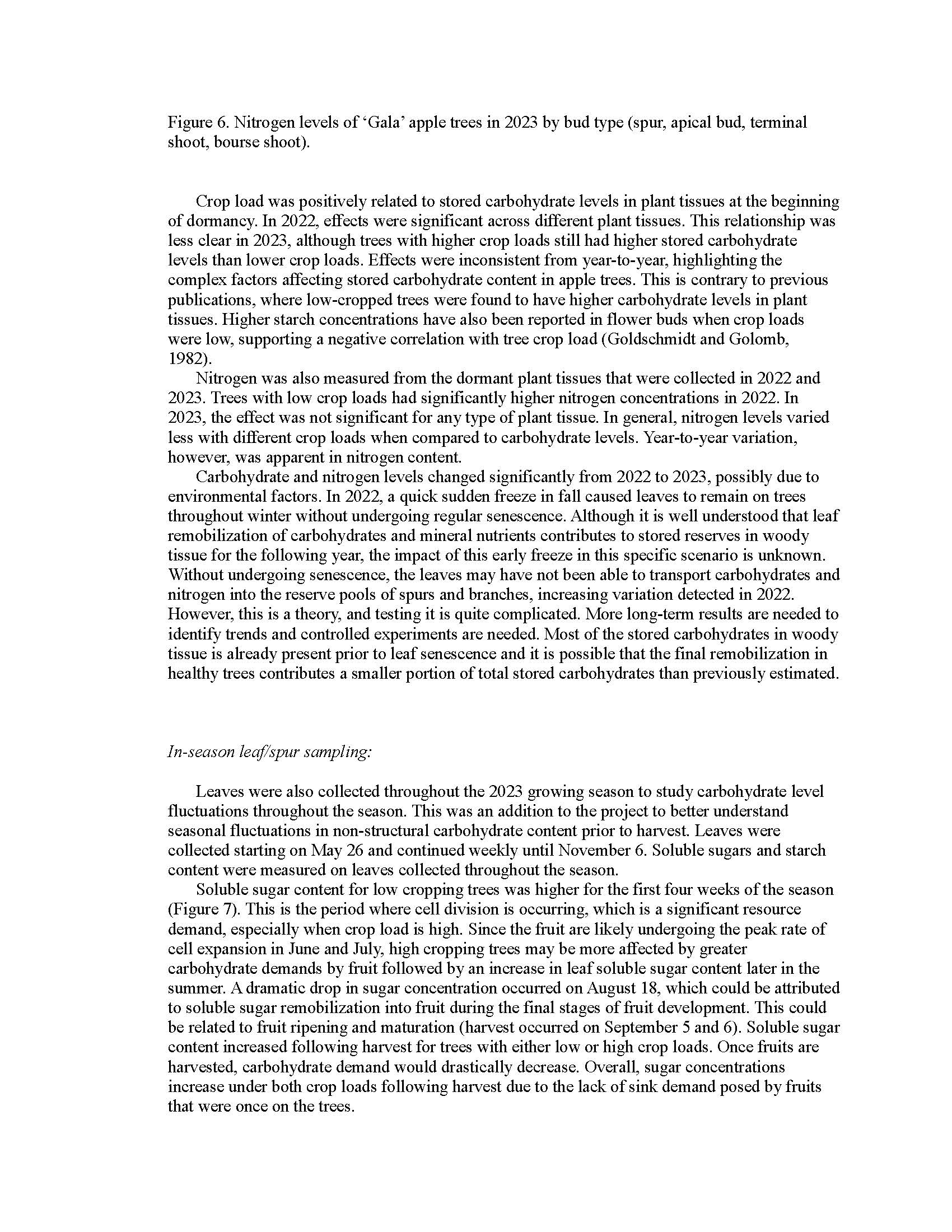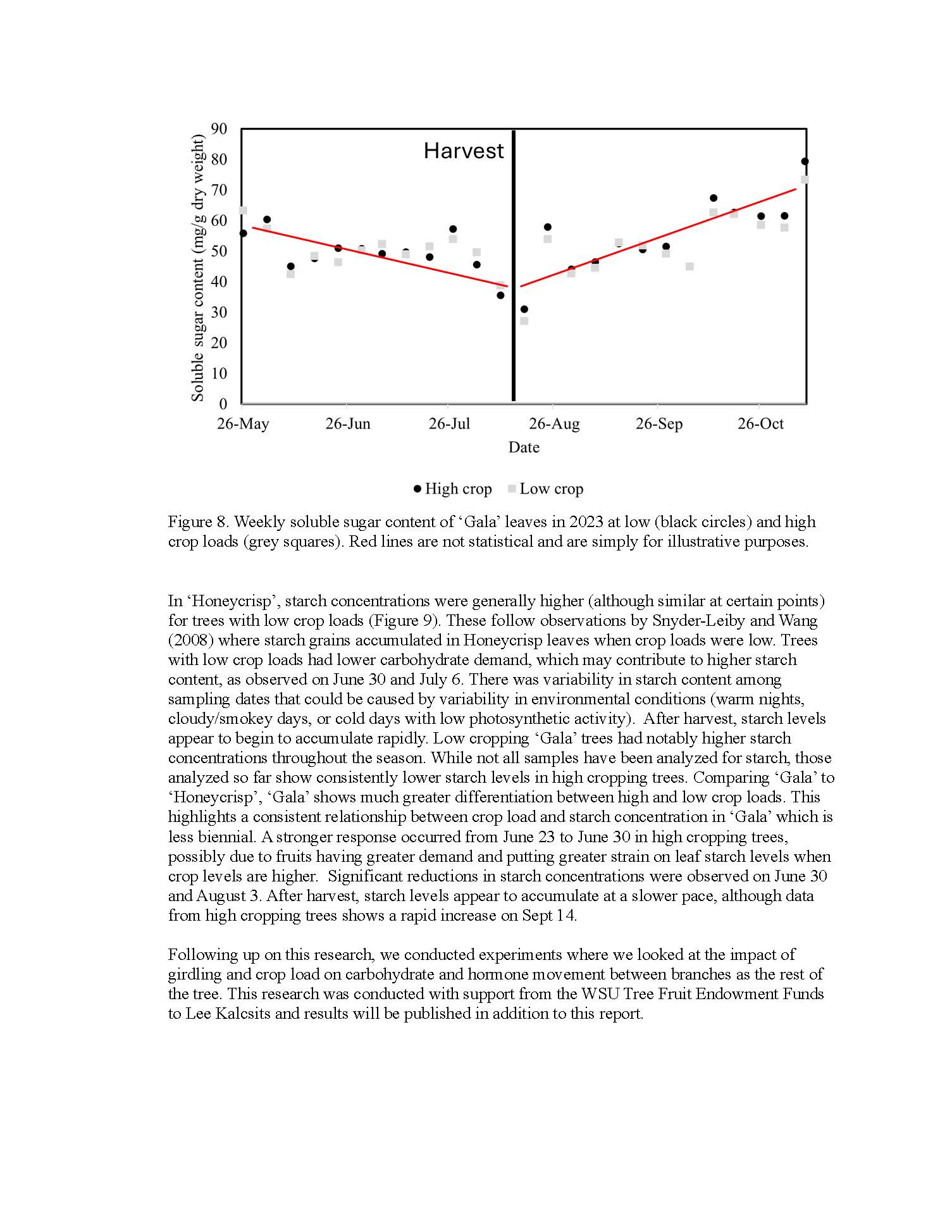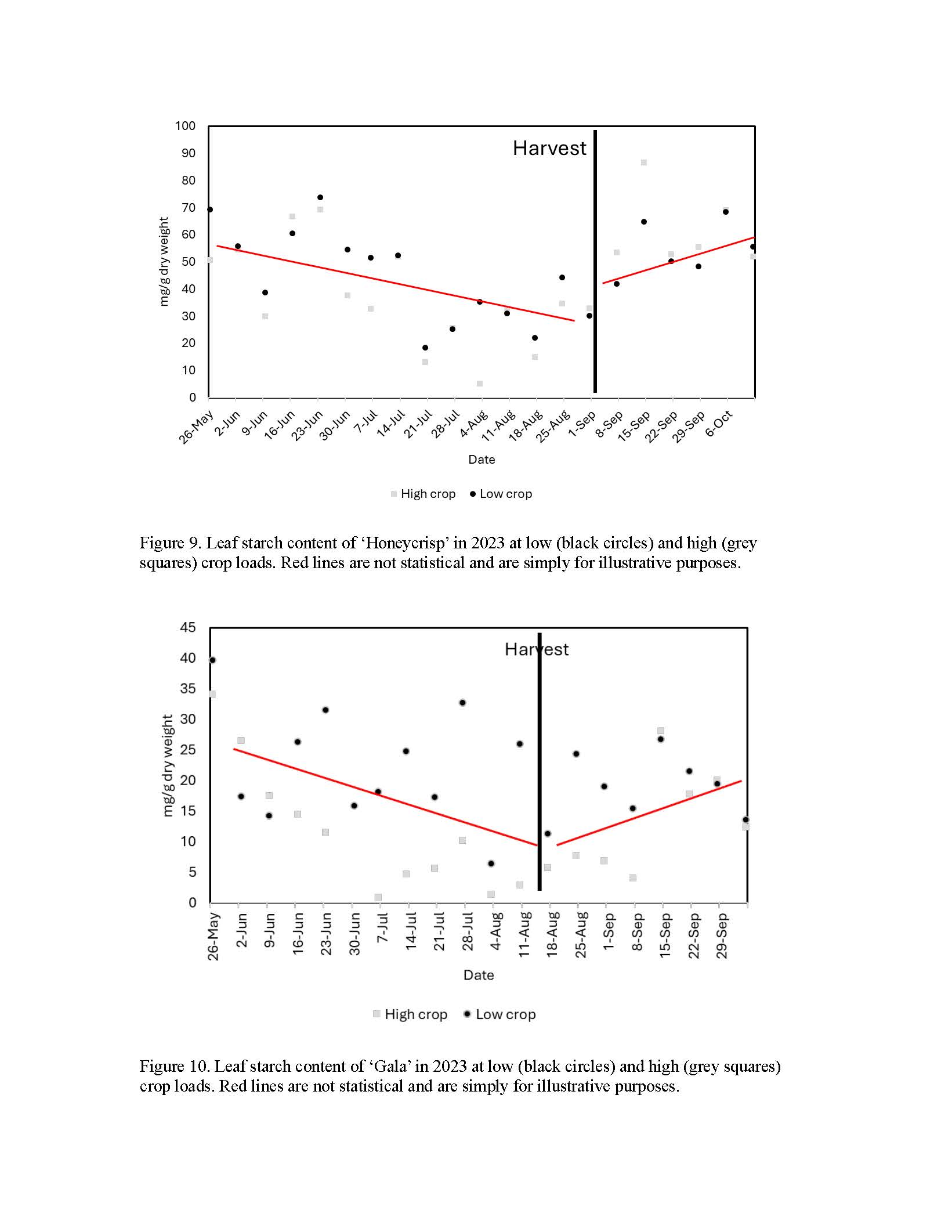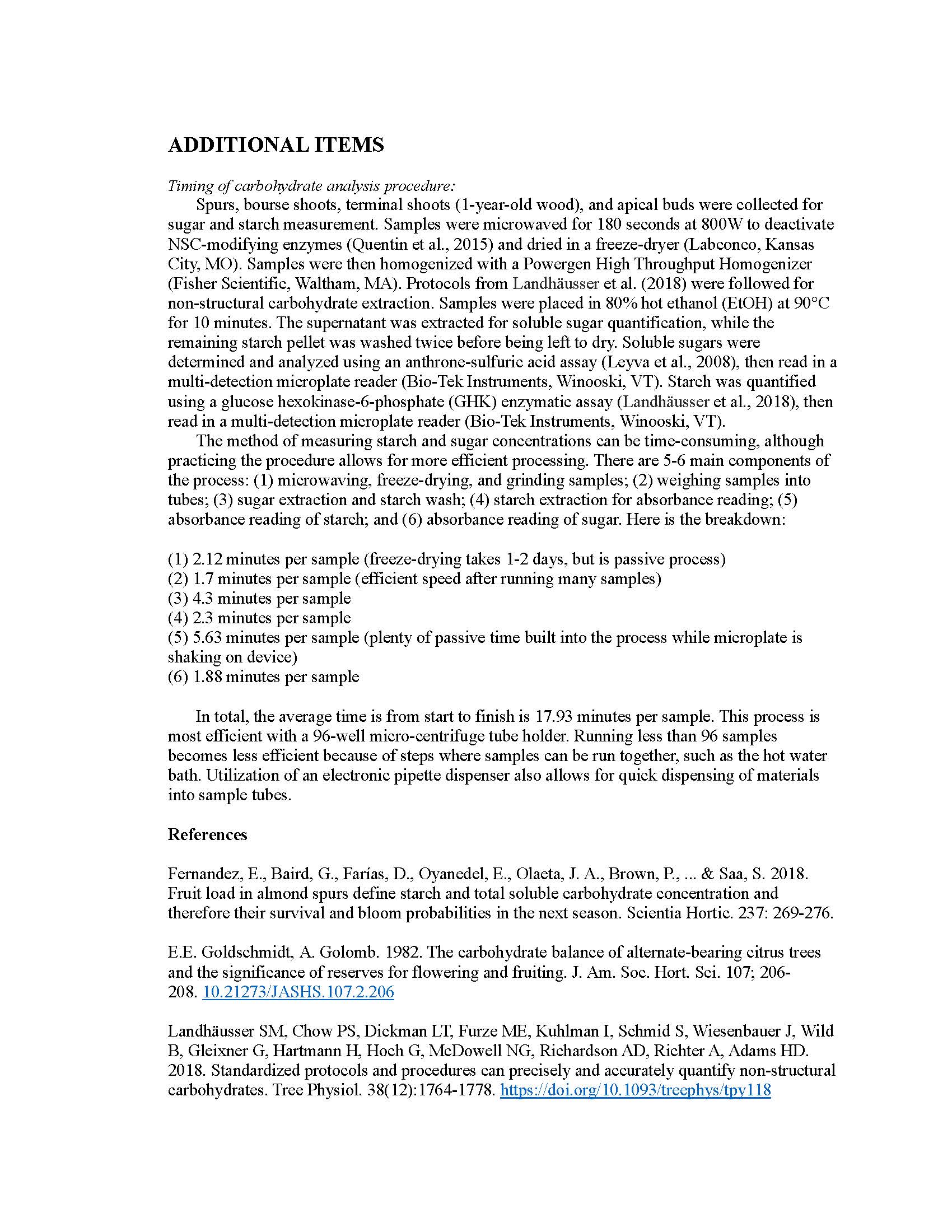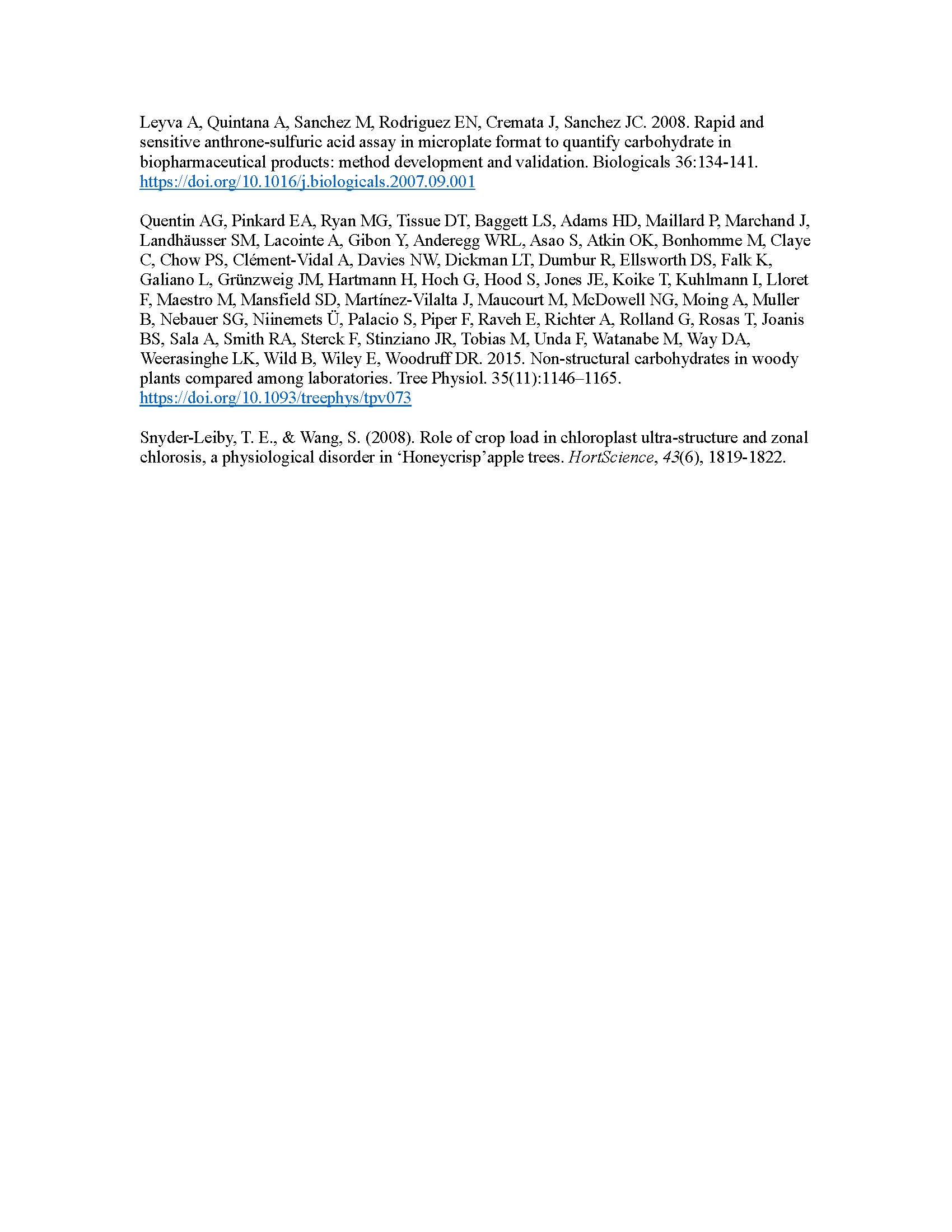Measuring storage reserves to assess severity of biennial bearing
Author: Lee Kalcsits
Published: 2025
Summary: Biennial bearing is not a novel concept for fruit trees, likely accompanying them since before their domestication. Biennial bearing, or alternate bearing, is characterized by a heavy crop one year, the “on” year, accompanied by little to no crop the following year, the “off” year. While environmental factors such as spring frosts and drought can initiate a biennial bearing cycle in fruit trees, genetics play an important role, with certain cultivars having a greater likelihood of bearing biennially. In apples, ‘Honeycrisp’ is prone to biennial bearing, even when environmental factors remain constant and in good supply. Regenerative buds can make up more than 90 percent of buds in an “on” year, while the “off” year maybe 20 percent or less of the buds being regenerative. Nonstructural carbohydrates fulfill distinct roles within plants, influencing flower bud initiation and fruit bud formation. Moreover, nitrogen reserves play a key role in fueling spring growth and flowering. We sought to quantify nonstructural carbohydrate and nitrogen levels of various plant tissues in both “on” and “off” trees of ‘Honeycrisp’ and ‘Gala’. Crop load from each tree was used to allow for greater distinction between “on” and “off” trees. Carbohydrate levels increased linearly with crop load, although results showed greater separation in 2022 than 2023. We theorize that abnormal events in 2022, when leaf senescence did not occur going into winter, could have disrupted carbohydrate and nitrogen translocation patterns in the trees, causing data to become more significant. Crop load was more significant in affecting carbohydrate and nitrogen levels of ‘Honeycrisp’ than ‘Gala’. Weekly leaf sampling indicated a clear impact of crop load and fruit development on sugar and starch concentrations of trees throughout the growing season. Carbohydrate and nitrogen levels of trees impact biennial bearing, although the strength and influence of this relationship are currently unclear. Follow up studies on the interactions between storage reserves and hormone movement during floral bud initiation will help support observations in this report.
Keywords:

